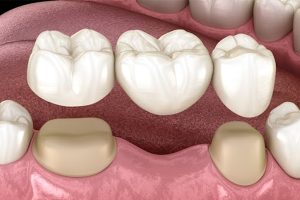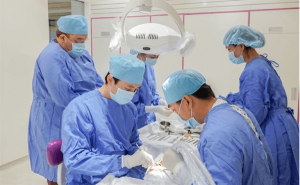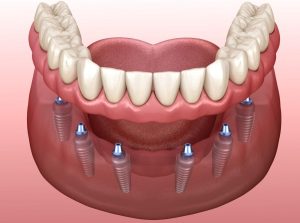Table of content
- 1. What Is Bone Grafting?
- 2. Why Is Bone Grafting Necessary for Dental Implant Placement?
- 3. Is Bone Grafting Always Mandatory for Dental Implants?
- 4. Situations Where Bone Grafting Is Recommended or Not Recommended
- 5. Common Bone Grafting Techniques for Dental Implants
- 6. When Is Bone Grafting Performed During Dental Implant Placement?
- 7. Step-by-Step Process of Bone Grafting for Dental Implants
- 8. Does Bone Grafting for Dental Implants Hurt?
- 9. How Long Does It Take for Bone Grafting to Heal?
- 10. Is Bone Grafting Safe?
- 11. Where Can You Get Reliable Bone Grafting and Dental Implant Services?
- 12. How Much Does Bone Grafting Cost?
- 13. Pre- and Post-Operative Guidelines for Bone Grafting
- 14. Patient Experiences with Bone Grafting
Bone grafting is often recommended when the jawbone density at the site of the missing tooth is insufficient to support a dental implant. Understandably, many patients wonder: Is bone grafting painful? How long does it take to heal? Let Elite Dental guide you through the details in this article.
1. What Is Bone Grafting?
Dental bone grafting is a surgical technique used to add bone material to the jaw, regenerating areas where bone loss has occurred. Over time, the grafted bone integrates with the patient’s natural bone, becoming thicker and more robust to support both the physiological and aesthetic functions of the jawline.
This process creates a stable foundation for the dental implant to anchor securely, ensuring successful and long-lasting restoration results.
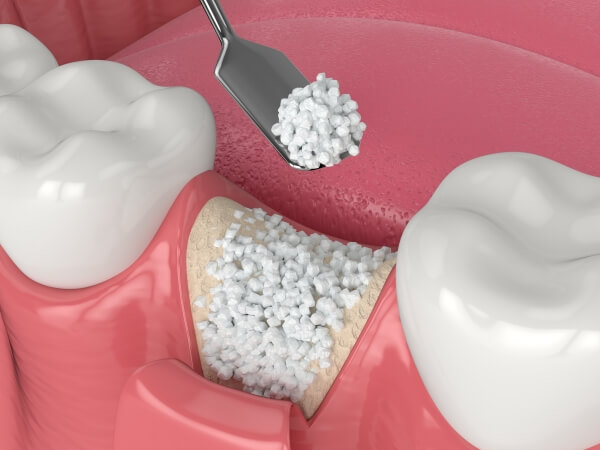
2. Why Is Bone Grafting Necessary for Dental Implant Placement?
Bone grafting plays a critical role in dental implant procedures by replenishing jawbone mass and ensuring optimal bone density and strength. This stability is essential for the successful placement of implants. Without sufficient bone volume and quality—caused by significant bone resorption in terms of height, density, and volume—the implant may become unstable and risk early failure or rejection.
3. Is Bone Grafting Always Mandatory for Dental Implants?
Bone grafting is not mandatory for all dental implant cases. The procedure is only performed when specifically indicated by a dentist, based on the patient’s bone condition.
4. Situations Where Bone Grafting Is Recommended or Not Recommended
Cases Where Bone Grafting Is Recommended
- Patients with significant bone resorption in the jaw, lacking sufficient volume to support the stability of the implant.
- Bone loss caused by prolonged use of removable dentures or dental bridges, which cannot replace the function of natural tooth roots.
- Patients with periodontal disease leading to inflamed, loose gums that expose tooth roots, affecting the surrounding bone structure.
- Other causes, such as bone trauma, complications from prior jaw surgery, or congenital bone deficiencies.
Dental bridges are one of the most common methods of restoring missing teeth. There are many questions related to this technique, such as: Are dental bridges good? How much do they cost? And what should you pay attention to when getting a dental bridge? Elite Dental will answer these questions…
Cases Where Bone Grafting Is Not Recommended
- Elderly patients or those with poor overall health who are unfit for surgery.
- Individuals with heavy alcohol or tobacco use who are unable to quit.
5. Common Bone Grafting Techniques for Dental Implants
Below are some widely used bone grafting techniques to support dental implants:
5.1. Synthetic Bone Graft (Alloplast)
Synthetic bone grafts, primarily composed of materials like hydroxyapatite or beta-tricalcium phosphate, mimic the properties of natural bone and serve as a biocompatible substitute.
5.2. Autogenous Bone Graft (Autograft)
This technique uses the patient’s own bone, typically harvested from another area such as the chin or pelvis, for grafting. It offers high compatibility and yields successful results.
5.3. Allogeneic Bone Graft (Allograft)
An allogeneic graft involves using processed bone from another human donor, which is treated to ensure safety and compatibility before transplantation.
5.4. Xenogeneic Bone Graft (Xenograft)
Xenografts utilize bone from animals, such as bovine sources. The bone undergoes extensive processing to make it suitable for human application.
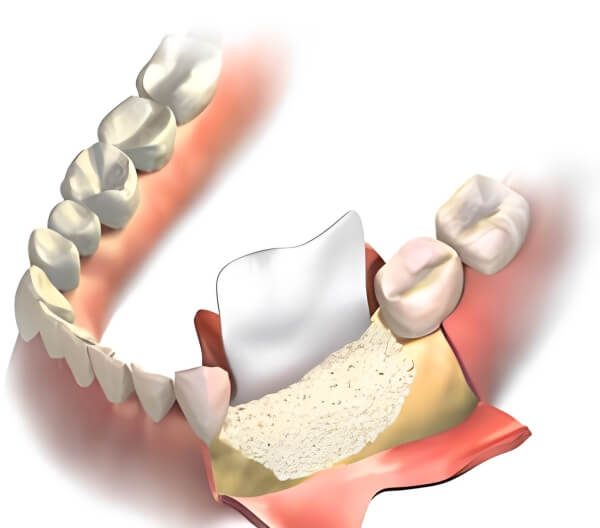
6. When Is Bone Grafting Performed During Dental Implant Placement?
Bone grafting can be performed either simultaneously with the implant placement or 6–8 months beforehand, depending on the extent of bone loss in the jaw.
7. Step-by-Step Process of Bone Grafting for Dental Implants
The bone grafting procedure typically follows these four steps:
Step 1: Examination, X-ray, and Consultation
The dentist conducts a comprehensive oral examination and uses imaging (e.g., X-rays or CBCT scans) to assess bone density and develop an appropriate treatment plan.
Step 2: Blood Test
Patients undergo a blood test to rule out any conditions that might affect the safety or success of the bone grafting procedure.
Step 3: Bone Grafting Surgery
The procedure begins with local anesthesia or sedation. The dentist then makes an incision to access the jawbone, places the graft material, and closes the area with sutures after sterilizing the surgical site.
Step 4: Follow-Up Visits
Patients return for follow-up appointments as scheduled to monitor the healing process and evaluate bone stability before proceeding with implant placement.
8. Does Bone Grafting for Dental Implants Hurt?
The level of discomfort experienced during a bone grafting procedure varies depending on the patient’s pain tolerance, the dentist’s expertise, and the tools used. However, local anesthesia ensures a pain-free experience during the procedure. Post-surgery, pain relief medications and aftercare instructions provided by the dentist help minimize discomfort and promote recovery.
9. How Long Does It Take for Bone Grafting to Heal?
Healing time after bone grafting typically ranges from 2 to 6 months, depending on the individual’s physiological response and overall health. Once the site has fully healed, the dentist evaluates the bone quality to determine readiness for implant placement.
Tips for you: Does Getting Dental Implants Hurt? What Factors Influence the Pain? Is Dental Implantation Dangerous? Potential Complications You May Encounter How long does dental implant surgery take and what factors affect it?
10. Is Bone Grafting Safe?
Bone grafting is generally a safe and effective procedure when performed by experienced professionals. The safety and success of the process rely on:
- The expertise of the dentist, who selects the appropriate technique and materials, manages risks, and ensures the procedure is performed under strict safety standards.
- Advanced technology, such as CBCT imaging, which helps determine bone dimensions and guides treatment planning.
To minimize risks, patients should choose a reputable dental clinic with skilled specialists and modern equipment.
11. Where Can You Get Reliable Bone Grafting and Dental Implant Services?
Elite Dental is a trusted name in dental implantology, with a team of specialized professionals committed to delivering high-quality care. Among them is Dr. Tran Hung Lam, a distinguished expert and Secretary-General of the Ho Chi Minh City Dental Implant Association, as well as the President of ITI Vietnam. Dr. Lam brings extensive international training and hands-on experience to every treatment plan.
Elite Dental is equipped with cutting-edge technology, including:
- CBCT imaging for accurate bone density assessment.
- PRP laser devices to accelerate healing and enhance graft integration.
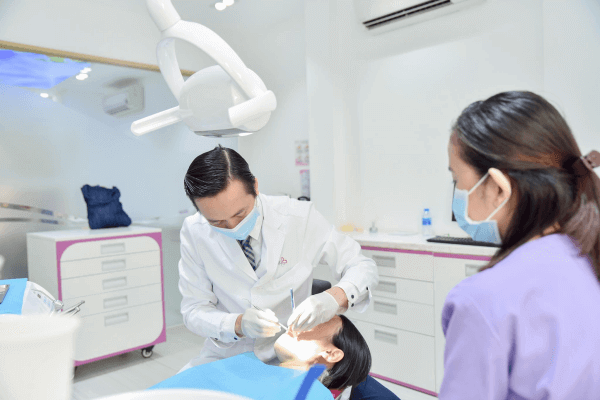
Elite Dental follows internationally recognized standards for implant and bone grafting procedures. The clinic features dedicated, sterile surgical suites for safe and efficient treatments, ensuring a seamless experience for patients.
12. How Much Does Bone Grafting Cost?
At Elite Dental, the cost of bone grafting varies depending on the severity of bone loss:
- Mild bone resorption: 8,000,000 – 20,000,000 VND
- Severe bone resorption: 70,000,000 – 80,000,000 VND
13. Pre- and Post-Operative Guidelines for Bone Grafting
To ensure a smooth and successful bone grafting process, patients should follow these important guidelines:
13.1. Before Bone Grafting
- Choose a reputable dental clinic equipped with modern technology, such as 3D CT imaging, for precise assessment of jawbone condition.
- Ensure the procedure is performed by a highly experienced and qualified dentist to guarantee safety and optimal results.
- Avoid stimulants like alcohol, beer, and tobacco for 4–6 weeks prior to the procedure.
- Maintain a calm and relaxed mindset before surgery. Consulting with your dentist to address any concerns can help alleviate stress.
13.2. After Bone Grafting
- Bleeding is common post-surgery. Gently bite on gauze to stop the bleeding.
- Avoid spitting, rinsing, or chewing during the first hour after surgery.
- Swelling and discomfort may occur in the initial days. Use an ice pack to reduce swelling and take prescribed medications as directed.
- Avoid strenuous physical activity to allow proper healing.
- Attend follow-up appointments as scheduled and contact your dentist immediately if you experience unusual symptoms.
14. Patient Experiences with Bone Grafting
Case 1: Mr. D.’s Journey to Restore Aesthetic Front Teeth
Mr. D. visited Elite Dental with a severely resorbed jawbone and a weakened dental bridge, particularly affecting his front teeth. This condition not only impaired his chewing ability but also impacted his facial aesthetics.
After a thorough examination, Dr. Tran Hung Lam devised a treatment plan:
1. Perform bone grafting.
2. Place implants and fit temporary removable dentures while waiting for implant integration.
3. Complete the process with permanent ceramic crowns for full restoration.

Case 2: A Young Teacher’s Journey to Restore Her Smile After Severe Jawbone Loss
Ms. D., a 30-year-old teacher, had previously undergone full-mouth dental crowns despite untreated periodontal disease. This led to severe bone loss beneath her teeth and poorly executed restorations, leaving her with loose teeth and significant halitosis, causing great distress.
Upon visiting Elite Dental, Ms. D. underwent a thorough examination and was treated in multiple stages:
- Initial Stage: Bone grafting was performed in conjunction with the placement of mini-implants. These implants supported a temporary bridge, allowing her to eat and speak without embarrassment.
- Six Months Later: Six implants were placed using the ProArch technique, preparing for the final restoration.

This case underscores the importance of carefully selecting a reputable and high-quality dental clinic for bone grafting and implant procedures. Patients should also strictly adhere to post-operative instructions from their dentist to achieve the best possible results.
Explore more success stories from our patients HERE.


